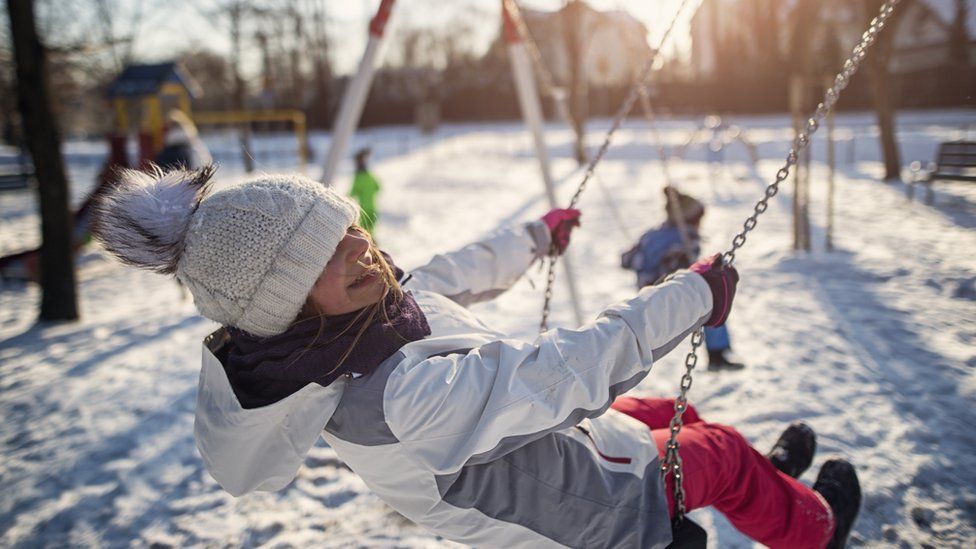Covid: 'Virus going in right direction but not fast enough'
- Published
- comments

Scientists behind a study tracking coronavirus in England say there are signs of a "shallow decline" in infection levels but they remain high.
And with not all regions seeing the same downward trend, pressure on health services is likely to continue.
Just under one in 60 people had the virus between 6 and 22 January according to researchers, with the trends "going in the right direction".
The estimate is based on swab tests of 168,000 people in households.
Confirmed UK coronavirus cases, based on people with symptoms having tests, have fallen sharply since the start of the year - but surveillance studies such as this one, which test people at home with or without symptoms, are thought to provide a more accurate picture of the spread of the virus.
Trends varied
The latest figures from Imperial College London's React study - one data source used by the government to judge the progress of the epidemic - cover the first two weeks of the third national lockdown.
Steven Riley, professor of infectious disease dynamics, at Imperial, said the prevalence of the virus was "going in the right direction but not fast enough" and "by no means as fast as in lockdown one".
The data found trends varied across England, with signs of a slight rise in the East Midlands, declines in London, the South East and South West, and levelling elsewhere.
But London had the highest proportion of people testing positive - 2.83%, which went up to more than 4% in 13- to 17- and 18- to 24-year-olds.
An interim report from React found that infections may have risen slightly during the first week of lockdown restrictions.
Key workers
Black or Asian people and those living in large households or deprived neighbourhoods were more likely to test positive than others.
Healthcare and care-home workers, as well as other key workers, were also more likely to be infected compared with other workers.
Study lead Prof Paul Elliott said infection rates "remain very high" but he was "definitely heartened by what looks like a decline".
And the priority was now to drive them down more quickly to reduce the pressure on busy hospitals.
Critical care
"The number of people infected with the virus is at the highest level that we've recorded since we began testing last May," he said.
"We're not seeing the sharp drop in infections that happened under the first lockdown.
"And if infections aren't brought down significantly, hospitals won't be able to cope with the number of people that need critical care."
More than 37,000 people are in hospital with coronavirus in the UK - twice as many as during the first peak, in April.
And more than 4,000 are on ventilators, more than at any other time during the pandemic.
Hospital admissions
Deaths reported within 28 days of a positive test for coronavirus remain high, averaging more than 1,000 a day in the past week. The number of people who have died with Covid-19 has now surpassed 100,000 in the UK.
Hospital admissions of patients with Covid are coming down slightly, according to government figures.
All these metrics are used by government ministers and scientific advisers to decide when best to lift restrictions.
Dr Simon Clarke, associate professor in cellular microbiology, at the University of Reading, said looking at hospital admissions alone was not a reliable way to do this.
"While there is still so much virus circulating in the population, there will be a significant risk of filling intensive-care units with unvaccinated members of the working-age population and those for whom the vaccine fails to give any protection against Covid-19," he said.
- LOOK-UP TOOL: How many cases in your area?
- YOUR QUESTIONS: We answer your queries
- THE R NUMBER: What it means and why it matters
- TEST AND TRACE: How does it work?
- TREATMENT: How close are we to helping people?
Related Topics
- Published21 January 2021
- Published26 January 2021